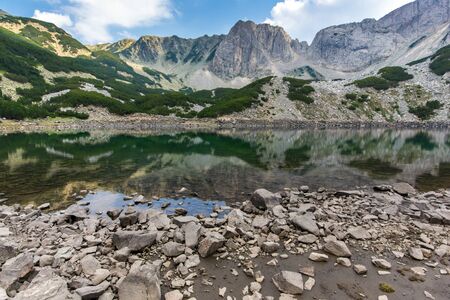1. Understanding Desert and Canyon Environments
When exploring the American Southwest, you’ll quickly realize that deserts and canyonlands are some of the toughest environments to survive in. These regions—like Arizona’s Sonoran Desert, Utah’s red rock canyons, and Nevada’s basin and range country—offer a stunning landscape but also pose serious survival challenges. Here’s what makes these arid areas unique:
Extreme Temperatures
Desert and canyon temperatures can swing wildly from blazing hot days to chilly nights. In places like Death Valley or the Grand Canyon, daytime highs often reach well above 100°F (38°C), while nighttime lows can drop by 40 degrees or more. This huge temperature change puts stress on your body and affects how much water you need.
Scarce Resources
Water is hard to find, and edible plants or animals are sparse. Unlike forested areas where streams or berries might be nearby, arid zones require you to plan ahead for hydration and nutrition. Even experienced hikers must know how to identify signs of water or potential food sources.
Common Challenges in Arid Landscapes
| Challenge | Description | Where You’ll See It |
|---|---|---|
| Lack of Water | Natural springs, rivers, or ponds are rare; many are seasonal or hidden. | Mojave Desert, slot canyons in Utah |
| Extreme Heat | Heat exhaustion and dehydration are constant risks during the day. | Sonoran & Chihuahuan Deserts |
| Difficult Terrain | Loose sand, rocky paths, steep canyon walls make travel slow and exhausting. | Canyonlands National Park, Grand Staircase-Escalante |
| Poor Shelter Options | Few trees or caves for shade; sun exposure is relentless. | Saguaro National Park, Painted Desert |
| Wildlife Hazards | Venomous snakes, scorpions, and insects can pose dangers. | Southeast California, Arizona deserts |
Terrain Features You’ll Encounter
- Slickrock: Expanses of bare sandstone common in Utah—beautiful but easy to get disoriented on.
- Dunes: Soft sand that makes hiking tough and hides footprints quickly.
- Canyons: Deep gorges with steep walls; sometimes offer shade but can be confusing to navigate.
- Boulder Fields: Rocky areas that slow down travel and can cause injuries if you’re not careful.
- Sparse Vegetation: Cacti, yucca, sagebrush—plants adapted to dry conditions but few provide food or water.
Key Takeaway for Adventurers
If you’re heading into America’s arid landscapes, knowing the environment is step one. Understanding the risks—heat, thirst, tough terrain—will help you make smart choices when searching for food and water as you explore these wild places.
2. Locating Water Sources in the Wild
Understanding Water in Arid Landscapes
Finding water in deserts and canyons is a real challenge, but not impossible if you know what to look for. The key is to recognize the subtle signs that nature leaves behind. Let’s break down some practical ways you can locate water, even in the driest environments.
Natural Water Sources: What to Look For
| Source Type | Description | Where to Find |
|---|---|---|
| Seeps | Slow leaks of groundwater coming to the surface, often dampening rocks or soil. | Bases of cliffs, canyon walls, shaded ravines |
| Springs | Places where underground water flows out naturally; can range from trickles to pools. | Low points in valleys, at the foot of hills or rock formations |
| Ephemeral Streams | Temporary streams formed by recent rainfall; may only last hours or days. | Dried stream beds (washes), especially after rainstorms |
Clues from Nature: Signs That Point to Water
Animal Tracks and Trails
Animals need water just as much as we do. If you spot well-used trails, clusters of tracks, or animal droppings converging toward a certain direction, there’s a good chance they lead to a water source. Birds flying low and repeatedly circling an area at dawn or dusk are also good indicators.
Vegetation Patterns
Lush or unusually green plants stand out in dry landscapes. Cottonwoods, willows, and reeds usually grow where their roots can reach underground moisture. If you see these plants clustered together while everything else looks dry, investigate closer – there might be water nearby.
Geographical Features That Help Find Water
- Canyon Bottoms: Rainwater collects at the lowest points. Walk along the base of a canyon and check under overhangs for moist earth or trickling water.
- Boulder Fields: Large rocks can shade small pools of water underneath them from evaporation.
- Potholes and Rock Depressions: Natural basins in rocks sometimes trap rainwater long after a storm has passed.
- Sandy Washes: Dig several feet down in low-lying sandy areas; sometimes youll hit damp sand that can be squeezed for moisture.
Quick Tips for Desert and Canyon Water Search
- Look for insects like bees or ants—they often hover around hidden sources of water.
- If you’re near human-made objects like old wells, pipes, or cattle tanks, check them carefully—sometimes they still hold usable water.
- Avoid stagnant pools with algae or dead animals; if desperate, always purify any wild water before drinking.
Knowing how to read the landscape and natural signs is essential when you’re searching for life-saving water in America’s deserts and canyons. Stay observant and patient—nature often rewards those who pay attention to its clues.

3. Water Purification and Conservation Methods
When you’re trekking through deserts or canyons in the U.S., finding water is just half the battle—making it safe to drink and making it last are equally important. Here’s how you can purify wild water and conserve every drop when you need it most.
How to Make Wild Water Safe
If you find a water source, never drink it straight from the ground. Desert water holes, creeks, or even collected rainwater can carry bacteria, viruses, and parasites. Here are practical purification methods recommended by American outdoor experts:
| Method | How It Works | Pros | Cons |
|---|---|---|---|
| Portable Water Filter | Pumps or squeezes water through fine filters that remove bacteria and protozoa. | Lightweight, fast, reusable. | Doesn’t always remove viruses; filters can clog with dirty water. |
| Boiling | Bring water to a rolling boil for at least one minute (three minutes at higher altitudes). | Kills bacteria, viruses, and parasites; no chemicals required. | Needs fuel/fire; time-consuming; doesn’t remove dirt or chemicals. |
| Chemical Treatment (Iodine/Chlorine) | Add tablets or drops according to package instructions; wait 30 minutes before drinking. | Lightweight, easy to use, kills most germs (including viruses). | Taste can be unpleasant; not effective against some protozoa (like Cryptosporidium); may not remove chemicals or heavy metals. |
Extra Tips for Desert Water Purification
- If water is cloudy or muddy, let it settle and pour off the clear part before treating.
- A bandana or shirt can help filter out large debris before using your main purification method.
- Avoid collecting water downstream of campsites, animal tracks, or where there’s visible contamination.
Water Conservation: Making Every Drop Count
The dry heat of American deserts means you’ll lose moisture quickly. Here are key strategies for rationing and conserving your water supply:
- Sip, Don’t Gulp: Take small sips regularly instead of drinking large amounts all at once. This helps your body absorb water more efficiently.
- Stay Cool: Rest in the shade during the hottest parts of the day (usually between 10am and 4pm). Travel early morning or late evening to avoid sweating out your reserves.
- Avoid Salty Foods: Salt makes you thirstier. Pack snacks like trail mix with unsalted nuts and dried fruit instead of jerky or salted chips.
- Mouth Breathing vs. Nose Breathing: Breathe through your nose to reduce water loss from your mouth while hiking.
- Cover Up: Wear a wide-brim hat and loose, light-colored clothing to minimize sweat evaporation and sun exposure.
- No Unnecessary Washing: Save your precious water for drinking—not for rinsing hands or face unless absolutely needed for hygiene or first aid.
Packing Smart: Water Storage Essentials
- Collapsible Bottles: These pack down when empty but hold extra capacity when needed—great for carrying bonus liters after you find a source.
- Dromedary Bags/Bladders: Durable, flexible containers that fit easily in backpacks for long desert hikes.
- Ziploc Bags: Lightweight option for emergency collection of rainwater or dew (just remember they’re not durable long-term).
4. Identifying Edible Plants and Insects
Common Edible Plants in American Deserts
Finding food in arid landscapes like deserts and canyons can be a challenge, but several native plants can provide vital nutrition and hydration. Here are some common edible plants you might find in places like the Sonoran or Mojave Desert:
| Plant | Description | How to Use | Cultural Notes |
|---|---|---|---|
| Prickly Pear Cactus | Paddle-shaped pads and colorful fruits (tunas) | Eat the fruit raw (remove spines) or cook pads (nopales); juice is refreshing | Staple for Native Americans; used in jams, jellies, and drinks |
| Agave | Thick, spiky leaves with central flower stalk | Bake or roast the heart for sweet, edible pulp; sap can be fermented for drinks | Used by indigenous peoples for food and fiber; source of agave syrup and tequila |
| Mesquite | Trees with bean-like pods | Pods can be ground into flour or eaten directly when ripe | Traditional flour for breads and porridge among Southwest tribes |
Edible Insects in Desert Environments
If plant options are limited, insects can be a surprising but reliable protein source. Here are some you may encounter:
| Insect | Description & Where to Find | Preparation Tips | Cultural Uses |
|---|---|---|---|
| Grasshoppers & Crickets | Found near vegetation or under rocks at night | Remove legs/wings, roast or fry before eating | Eaten by many Native American groups as survival food |
| Ants (especially honeypot ants) | Nest in sandy soils; honeypot ants have swollen abdomens full of sweet liquid | Eat raw or roasted; avoid red fire ants which can sting painfully | Treat among southwestern tribes; valued for natural sugars and hydration |
| Caterpillars (like mesquite worms) | Found on mesquite trees during certain seasons | Remove guts, cook thoroughly before eating to destroy parasites | A traditional snack for some desert communities in Arizona and New Mexico |
Tips for Safe Foraging in the Desert
- Avoid Unknown Species: If you aren’t sure about a plant or insect’s safety, don’t eat it. Many desert species are toxic.
- Avoid Mushrooms: Most wild fungi in dry climates are unsafe.
- Watch Out for Pesticides: Near roads or developed areas, plants may be contaminated.
- Treat Raw Foods: Always peel cactus fruits carefully and cook insects or unfamiliar plants to reduce risk of illness.
- Cultural Wisdom: Local Native American knowledge is invaluable—many communities have used these foods safely for generations.
- No-Taste Test: If desperate, test a tiny amount on your skin first. Wait 15 minutes for any reaction before tasting a small bit.
Remember: Preparation Matters!
Desert foods often require careful handling—spines must be removed from cacti, pods ground into flour, and insects cooked well. Learning these skills ahead of time can make a huge difference if you ever need to survive in the wild American Southwest.
5. Essential Gear and Emergency Tips
Must-Have Gear for Desert Survival
When exploring the arid landscapes of the American Southwest—like the Mojave, Sonoran, or high desert canyons—having the right gear is crucial for your safety. Here’s a quick breakdown of essential items every desert hiker or adventurer should pack:
| Gear | Why It’s Essential |
|---|---|
| Water Containers (at least 1 gallon per person per day) | Dehydration happens fast in dry climates; you need more water than you think. |
| Water Filtration System or Purification Tablets | If you find a water source, it may not be safe to drink without filtering or treating it first. |
| Electrolyte Tablets or Powder | Replaces lost minerals from sweating and helps prevent heat exhaustion. |
| Signal Mirror & Whistle | For signaling rescuers if you get lost; sound and reflective flashes travel far in open areas. |
| Personal Locator Beacon (PLB) or Satellite Messenger | Sends emergency distress signals with your location, even where there’s no cell service. |
| Wide-Brim Hat & Sun Protection Clothing | Keeps you cool and protects from sunburn; vital under harsh desert sun. |
| Map, Compass, and GPS Device | Electronic navigation can fail; always have backups for finding your way. |
| Basic First Aid Kit | Treats minor injuries, blisters, and stings common in dry terrain. |
| Emergency Blanket or Bivy Sack | Nights get cold fast; these keep you warm if stuck overnight. |
| High-Energy Snacks (jerky, nuts, bars) | You’ll burn calories fast; lightweight foods are best for energy and portability. |
What to Do If You Get Lost in the Desert
- Stay Calm and Stay Put: Panicking wastes energy and water. Unless you’re certain where help is, it’s safest to stay in one place.
- Use Your Signal Devices: Signal mirrors can reflect sunlight toward passing planes or search parties. Blow your whistle in bursts of three—the universal distress signal in the US outdoors.
- Create Visible Markers: Lay out bright clothing or rocks in patterns easily spotted from above. “SOS” is recognized internationally as a distress call.
- Shelter from the Sun: Find shade during the hottest part of the day (usually 10am-4pm). Use an emergency blanket to create shade if natural cover isn’t available.
- Ration Water Wisely: Drink small sips regularly rather than gulping. Avoid eating too much if water is scarce, as digestion uses up fluids.
- Avoid Walking During Peak Heat: If you must move, travel early in the morning or late afternoon when temperatures are lower.
- Mark Your Path: If you decide to move, leave obvious signs behind—arrows made from stones, stacked rocks, or notes under rocks—to help rescuers track your direction.
- If You Have Cell Service, Call 911: Give clear details about your location using landmarks, trail names, or GPS coordinates if possible. Stay on the line until told otherwise.
- If Using a PLB or Satellite Messenger: Activate only for true emergencies. Once triggered, stay put so rescuers can locate you efficiently.
- Pace Yourself: Heatstroke is a real danger—rest often and listen to your body’s warning signs like dizziness or nausea.
Cultural Tip: How Rescues Work in US Deserts
If you activate an emergency beacon or call for help in most US deserts, local Search and Rescue teams—often volunteers coordinated by county sheriffs—will begin looking for you. In national parks like Grand Canyon or Joshua Tree, park rangers lead rescue operations. Staying visible and conserving your resources increases your chances of being found quickly. Always let someone know your itinerary before heading out!


